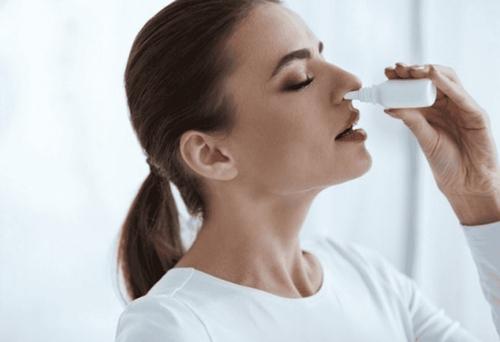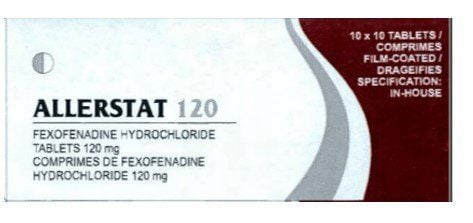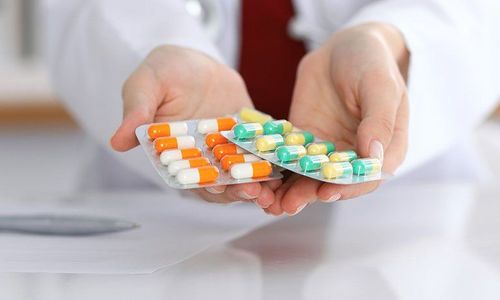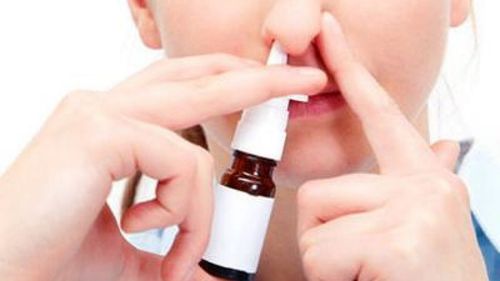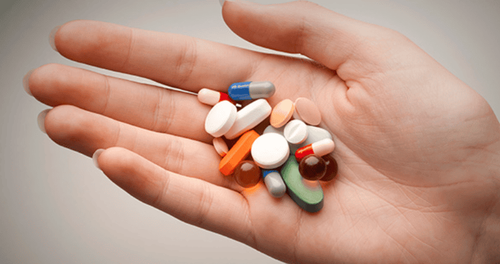This is an automatically translated article.
Tinifast is the brand name that contains the ingredient Fexofenadine, a new generation of antiallergic drugs used for both children and adults.
1. Pharmacology of the drug Tinifast
1.1. Pharmacodynamics Tinifast is an antihistamine drug, prepared in the form of tablets. Currently, there are preparations on the market as Tinifast 60, Tinifast 120, Tinifast 180 containing the active ingredient Fexofenadine hydrochloride with respective concentrations of 60mg, 120mg, 180 mg.
Fexofenadine is a metabolite of terfenadine, a selective peripheral H1-receptor antagonist. The drug has a long-lasting antihistamine effect, suitable for the treatment of allergies.
Fexofenadine has no sedative or other central nervous system effects. Studies in laboratory animals have shown that fexofenadine has no anticholinergic or alpha1-adrenergic receptor blocking effects, and does not cross the blood-brain barrier.
1.2. Pharmacokinetics In normal healthy subjects, after a single oral dose of 60 mg Fexofenadine, mean serum drug concentrations were 209 ng/ml. In a study in healthy volunteers, 60 mg of Fexofenadine Hydrochloride was repeated every 12 hours and 10 such doses were administered, peak plasma concentrations of 286 ng/ml were observed. If Fexofenadine is taken at a dose of 120 mg twice a day, the drug has linear pharmacokinetics. For the elderly (≥65 years of age) receiving Fexofenadine hydrochloride, peak plasma concentrations were 99% higher in subjects younger than 65 years of age. The mean half-life is similar to that of healthy volunteers. For patients with mild renal impairment (creatinine clearance 41-80 ml/min) and severe renal impairment (creatinine clearance 11-40 ml/min), peak plasma concentrations of fexofenadine were higher, respectively. were 87% and 111% compared with healthy volunteers; The mean half-life was also longer (59% and 72% compared to healthy subjects). The pharmacokinetics of Fexofenadine HCl in patients with hepatic impairment is not significantly different from that in healthy subjects. There were no differences in the pharmacokinetics of Fexofenadine HCl between men and women.
2. Indications of the drug Tinifast
Tinifast 60, Tinifast 120, Tinifast 180 is indicated for the treatment of adults and children aged 6 years and older in the following cases:
Treatment of symptoms caused by allergic rhinitis such as runny nose, itchy nose, sneezing , itchy throat, itchy eyes, red eyes, watery eyes. Urticaria, or idiopathic, chronic urticaria.
3. Dosage - How to take Tinifast
Tinifast is taken orally. Dosage of Tinifast depends on the patient and the purpose of treatment. Specifically as follows:
For the use of Tinifast in the symptomatic treatment of allergic rhinitis:
Adults and children from 12 years of age: 60mg/time, taken twice a day or can be used once a day with a dose 120-180mg. For patients with renal impairment: start with 60mg orally once a day. Children from 6 to 11 years old: 30mg/time, 2 times/day. Children with renal insufficiency should only be started on a dose of 30mg orally once a day. For the treatment of chronic idiopathic urticaria with Tinifast, the dose is as follows:
Adults and children from 12 years of age: 60mg/time, 2 times/day. Patients with renal impairment are initiated at a dose of 60 mg orally once a day. Children from 6 to 11 years old: 30mg/time, 2 times/day. Children with renal failure start with a dose of 30mg orally once a day. Note: No dose adjustment of Tinifast is required in patients with hepatic impairment. The specific dose depends on the patient's condition and the progression of the disease. The doctor will give the most accurate indication when using Tinifast in each specific case.
4. Contraindications of Tinifast
Contraindicated to use Tinifast for subjects sensitive to drug components.
5. Side effects when using Tinifast
Common side effects of Tinifast (ADR > 1/100) include:
Nervousness: Fatigue, headache, dizziness, lightheadedness, dizziness, drowsiness. Gastrointestinal: Nausea, dyspepsia. Respiratory: Symptoms of viral infection: colds, flu or upper respiratory infections, sinusitis. Musculoskeletal: Menstrual pain. Ear: Inflammation of the middle ear. Some less common side effects when using Fexofenadine (1/1000 < ADR < 1/100) include:
Psychiatric: Sleep disturbance, fear. Digestion: Abdominal pain, dry mouth. In addition, patients may present with some other but rare symptoms (ADR < 1/1000), which are:
Skin: Skin rash, pruritus, urticaria. Body as a Whole: Flushing, angioedema, chest pain, dyspnea, anaphylaxis.
6. Tinifast drug interactions
Tinifast drug interactions that may occur during use are as follows:
Ketoconazole or Erythromycin increase the concentration of Fexofenadine in the blood plasma by 2-3 times when combined with each other. However, this interaction did not affect the QT interval and no additional adverse reactions were noted. Combining Fexofenadine with antacids containing aluminum or magnesium in the form of gels may result in decreased plasma concentrations of Fexofenadine. Fexofenadine does not interact with drugs metabolized by the liver, because Fexofenadine is not metabolized in the liver. Certain fruit juices such as orange, grapefruit, and apple juice may decrease the bioavailability of fexofenadine.
7. Be careful when using Tinifast
Attention and precautions when using Tinifast in special subjects:
People over 65 years old. People with pre-existing cardiovascular risk, or QT prolongation. Children under 6 years old. Patients with renal impairment: Adjust the dose of Tinifast in accordance with the glomerular filtration rate. Pregnant women: only use in case of real need and consult a doctor. Lactation: There is no clear evidence whether fexofenadine is excreted in breast milk. Therefore, nursing mothers need to consult a doctor before taking the drug. Driving or operating machinery: Fexofenadine rarely causes drowsiness, however caution should be exercised when driving or operating machinery. In short, Tinifast is a brand name that contains the ingredient Fexofenadine, a new generation of antiallergic drugs used for both children and adults.
Follow Vinmec International General Hospital website to get more health, nutrition and beauty information to protect the health of yourself and your loved ones in your family.




